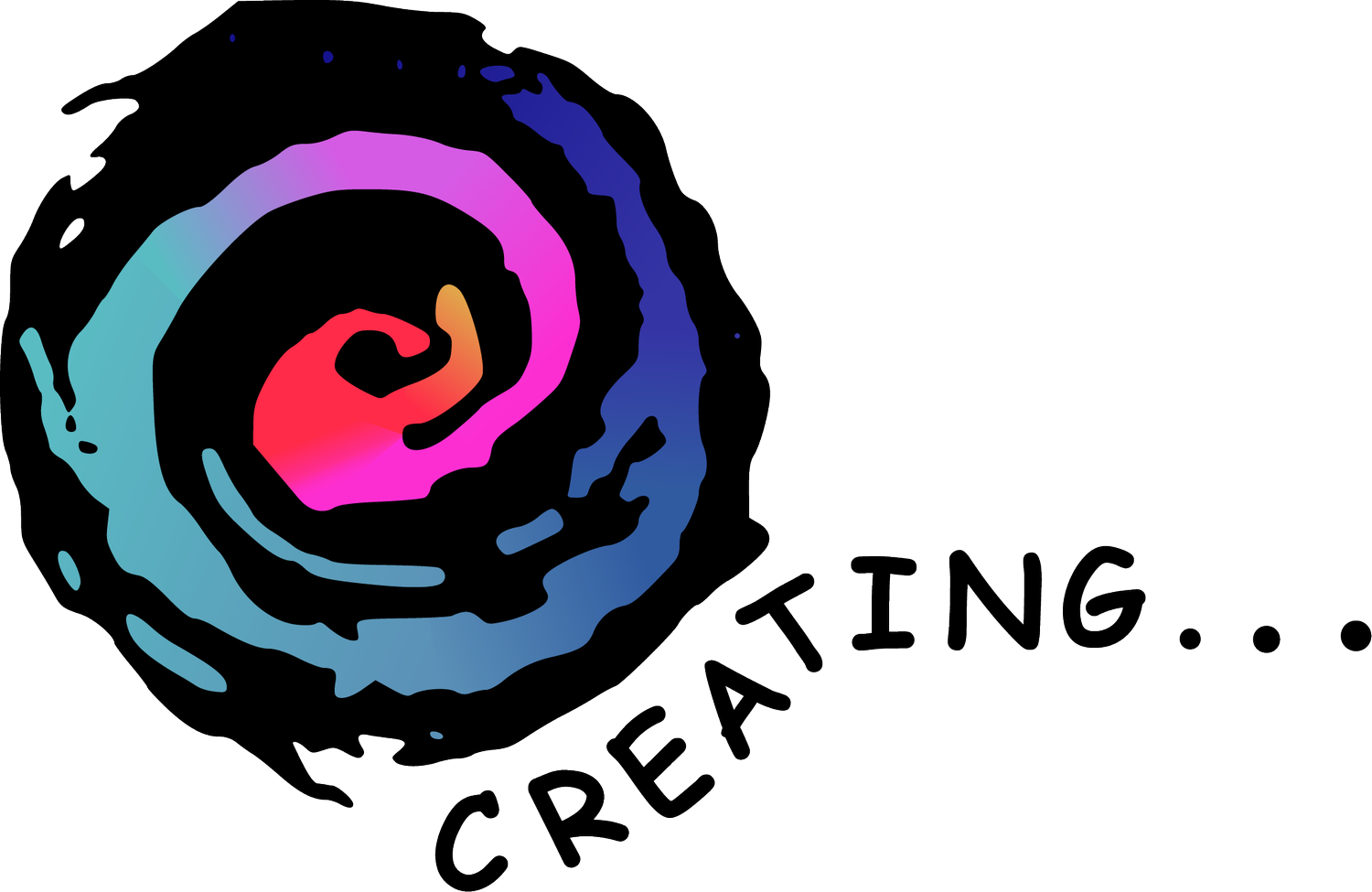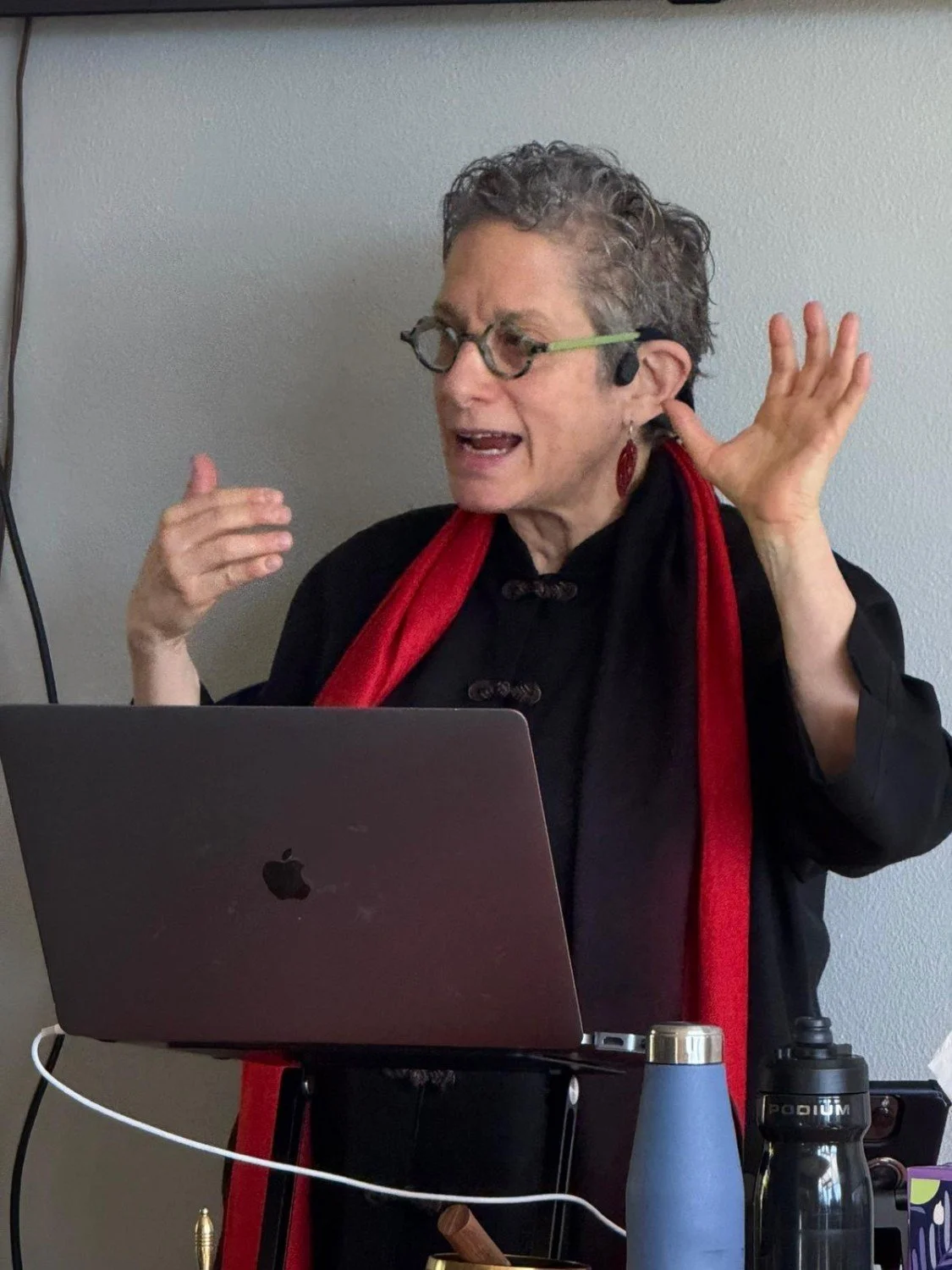Stop the Leadership Vomit: Transforming Triggers While Keeping Your Edge
If you are reading this sitting down and you are able to stand up, please stand up.
If you have snapped at anyone, gotten angry, felt irritated, judged someone, had an adult temper tantrum of some sort at work, at home, with friends or loved ones recently where your reaction was larger than the situation, please sit down.
At the opening of my keynote address, "Transforming Triggers: How Irritation Opened the Doorway to Discovery," at the 2025 Spring Conference of ICF Oregon, "Navigating Complex Change: Harnessing the Human Connection in Turbulent Times," yesterday, I had everyone stand up and asked the same question. All but one person sat down.
This simple exercise reveals what we all know intuitively - triggers are universal human experiences. We all have them - those moments when something happens that seems to bypass our rational mind and sends us straight into a reactive state, causing us to, as Dr. Dan Siegel says, "flip our lid."
I have a mission to help people learn to befriend triggers, recognizing them not as enemies to be suppressed or embarrassing failures of self-control, but as powerful signals from our deeper selves. These signals often point to core needs, values, or boundaries that aren't being honored—whether it's the need to be seen and valued, to have agency in a situation, or to protect something we care deeply about. When we approach triggers with this perspective, they transform from liabilities into valuable messengers that can guide us toward greater wholeness and more impactful leadership.
This isn't about suppressing your fire or dulling your edge – it's about channeling that intensity with awareness and choice.
The Body's Wisdom
Waking up to our bodies offers a profound pathway to transformation, inviting us to listen and heed the deep wisdom they contain. By cultivating somatic or body awareness, we can learn to sense the early micro signals that precede a trigger and address what they are communicating.
If we can hear that knock at our door, and the early warning signs are attended to, what might have been a full-blown trigger dissipates.
The flip side is that not being attuned to our bodies, we miss the knock at the door, the trigger comes flying in at rapid speed and we end up VOMITING all over those unfortunate to be in our path, creating messes we then have to clean up.
Sometimes it's projectile vomit, other times it comes in dribble form—yet it's vomit nonetheless. If we are in positions of power and we are triggered, more complex messes happen, where we can overuse, misuse or in the worst cases abuse our power. These messes become more challenging to clean up.
Why Go on an Inner Expedition?
It's deep and important work that I believe can help us co-create a healthier world we want to inhabit together. Why go on an inner expedition into triggers? How can this help us as leaders, as coaches, as teachers, as parents, as mere human beings?
One of the elders that has lived amongst us and was one of my most profound teachers, Arnold Mindell, the founder of Process Work, reminds us: "We are the instruments that work in the world with people and so our greatest responsibility is to develop our deepest skills and awareness from the inside out to enable us to be of greatest service to others and to the world." That's why.
When we operate from a triggered state, we sacrifice our ability to respond with intention. Our perspective narrows, our creativity diminishes, and our capacity for empathy often disappears. As leaders, this reactive state can damage relationships, derail important initiatives, and undermine the psychological safety of our teams.
Introducing T.R.A.C.E.: A Path to Transformation
In my keynote, I shared an innerwork framework I've developed called T.R.A.C.E., which offers a systematic approach to working with triggers. This method helps leaders recognize early warning signs, regulate their nervous systems, and transform reactive moments into opportunities for growth and connection.
The T.R.A.C.E. method addresses both the physiological and psychological aspects of triggers, giving you practical tools to navigate challenging interactions with greater awareness and choice. Rather than being at the mercy of your triggers, you can learn to use them as valuable signals and teachers.
Here's an example of what transformation looks like in action and demonstrates the first two parts of the T.R.A.C.E. framework.
Cathy Bernatt delivering the keynote address at the 2025 ICF Oregon Spring Conference, May 6, 2025.
Diane's giving her quarterly results presentation when the CFO cuts her off mid-sentence with, "These numbers seem overly optimistic given market conditions. What methodology did your team use?" Diane's face flushes hot. Her jaw clenches. The thoughts race through her head: "He's implying we manipulated the data. After all the extra hours and triple-checking we did." This is where the body's alarm system goes into overdrive – trigger activated.
But Diane's been doing this work. She catches the physical signals (T - Track) and takes a deep breath, planting her feet firmly on the floor (R - Regulate). The urge to defensively justify her team's work doesn't vanish, but it loses its stranglehold on her nervous system.
As she sits with the discomfort, Diane realizes what's really being activated: her deep need for recognition of the months of 80-hour weeks her team put in, and her core value of integrity in reporting results honestly (Analyze). The trigger is signaling something important about what matters to her.
In the past, this interaction would've gone one of two ways: Diane would have either lashed out defensively, "Oh, NOW you care about methodology? Where was this concern when we were pulling all-nighters to meet YOUR arbitrary deadline? This is exactly why nobody wants to collaborate with Finance!" (projectile vomiting all over the CFO), or she would have swallowed her reaction and silently seethed for weeks, undermining the CFO behind the scenes.
Instead, Diane responded directly, "That challenge deserves a real answer. Let me show you specifically how we accounted for market volatility in sectors X and Y." No hiding, no exploding – just straight-up leadership presence with her edge intact.
The CFO, who was braced for the typical defensive reaction, visibly relaxed. Instead of the usual toxic exchange that would have poisoned the rest of the meeting, the two actually engaged in a substantive discussion that improved the final analysis.
These moments of choice happen constantly across every domain of our lives. The difference isn't in whether we get triggered – that's universal. The difference is in what happens next – whether we're ruled by our triggers or whether we use them as information to become more effective and authentic human beings who can lead from clarity and responsiveness instead of reactivity.
The Leadership Advantage
Leaders who master how to transform triggers gain a significant advantage. They model emotional intelligence, create psychologically safer environments, make better decisions under pressure, and ultimately build more resilient teams. By developing this skill, you don't just become a better leader – you become a more integrated, authentic human being.
The most dynamic, innovative leaders I work with often worry that addressing their triggers means becoming passive or losing their edge. The opposite is true. When you transform triggers rather than being ruled by them, you retain all your passion and directness – but deploy it strategically rather than reactively. Your edge becomes sharper, not duller.
In today's complex environment, leaders who can maintain their boldness while eliminating reactivity have an increasingly rare and valuable capability – one that creates measurable advantages in team performance, strategic decision-making, and organizational culture.
The Power of Authenticity
Dr. Jacob Ham beautifully articulates the importance of embodied awareness in our relationships: "If your own body becomes the instrument for knowing what's happening in the room, then love and hate just become signifiers of authenticity. When a client is authentic and vulnerable, it naturally engenders love and compassion from the other."
This same principle applies in leadership contexts—when we're present and authentic, even in challenging moments, we create space for real connection and transformation.
Of course, transforming your own triggers is just one side of the equation. Being on the receiving end of someone else's triggered reactions—their emotional vomit—creates its own unique challenges. While beyond the scope of this article, learning to maintain your center and respond effectively when others are triggered is a crucial leadership skill that also benefits from the T.R.A.C.E. approach.
The Ongoing Practice
Dr. Jacob Ham reminds us, that like working with trauma, working with triggers isn't a linear journey from reactivity to perfect calm. Instead, we experience moments of clarity and awareness, only to have them briefly covered over by life's challenges.
The path to transformation is ongoing—we must figure out a way to reclaim that experience over and over again, gradually expanding our capacity to track micro-signals far before emotional hijacking occurs, enabling us to regulate, remain present and respond rather than react from a triggered place.
Closing Invitation
May you find your way back to presence. May you use your triggers as teachers. May you fall in love with all your parts—especially the ones that react.
The Path Forward
Triggers are doorways—invitations to deeper awareness and more authentic connection. When we learn to walk through these doorways with curiosity instead of reactivity, everything changes. Our leadership deepens. Our relationships flourish. Our impact expands.
Bold leaders who've mastered their triggers don't become meek – they become more formidable. Their words land with precision rather than exploding indiscriminately. Their intensity becomes a tool they wield with skill rather than a force that wields them. Most importantly, they learn to use their power optimally—neither overusing it in reactive moments nor underusing it through avoidance. They harness the full force of their authority with awareness, intention, and care.
Whether you struggle with your own triggered reactions or find yourself regularly impacted by others' emotional vomit, developing skills to transform these challenges creates remarkable advantages. Leaders who master these dynamics become powerful agents of change in their organizations—capable of maintaining their edge while creating psychological safety for those around them. This capacity creates measurable advantages in team performance, strategic decision-making, and organizational culture.
References
Siegel, D. J. (2012). The developing mind: How relationships and the brain interact to shape who we are (2nd ed.). Guilford Press.
Ham, J. (2023). "If your own body becomes the instrument for knowing what's happening in the room, then love and hate just become signifiers of authenticity." From Using presence as the antidote to trauma: How we begin to break cycles. Listen to Dr. Ham's podcast interview.
Ham, J. (2023). On the non-linear nature of healing: "The practice isn't linear, I'm traumatized and then I'm healed. It's more like I'm traumatized and I have this moment of awareness, and then it gets covered over again by life." From Using presence as the antidote to trauma. Listen to Dr. Ham's podcast interview.
Let’s continue the conversation.
I’d love to hear what resonated for you about this article - and invite your reflections, provocations, and questions over on LinkedIn.
Cathy Bernatt founded Creating... twenty-five years ago. She works with executives and senior leaders who aspire to use their power more consciously.
Connect: connect@creating.bz | (503) 568-1786 | www.creating.bz


